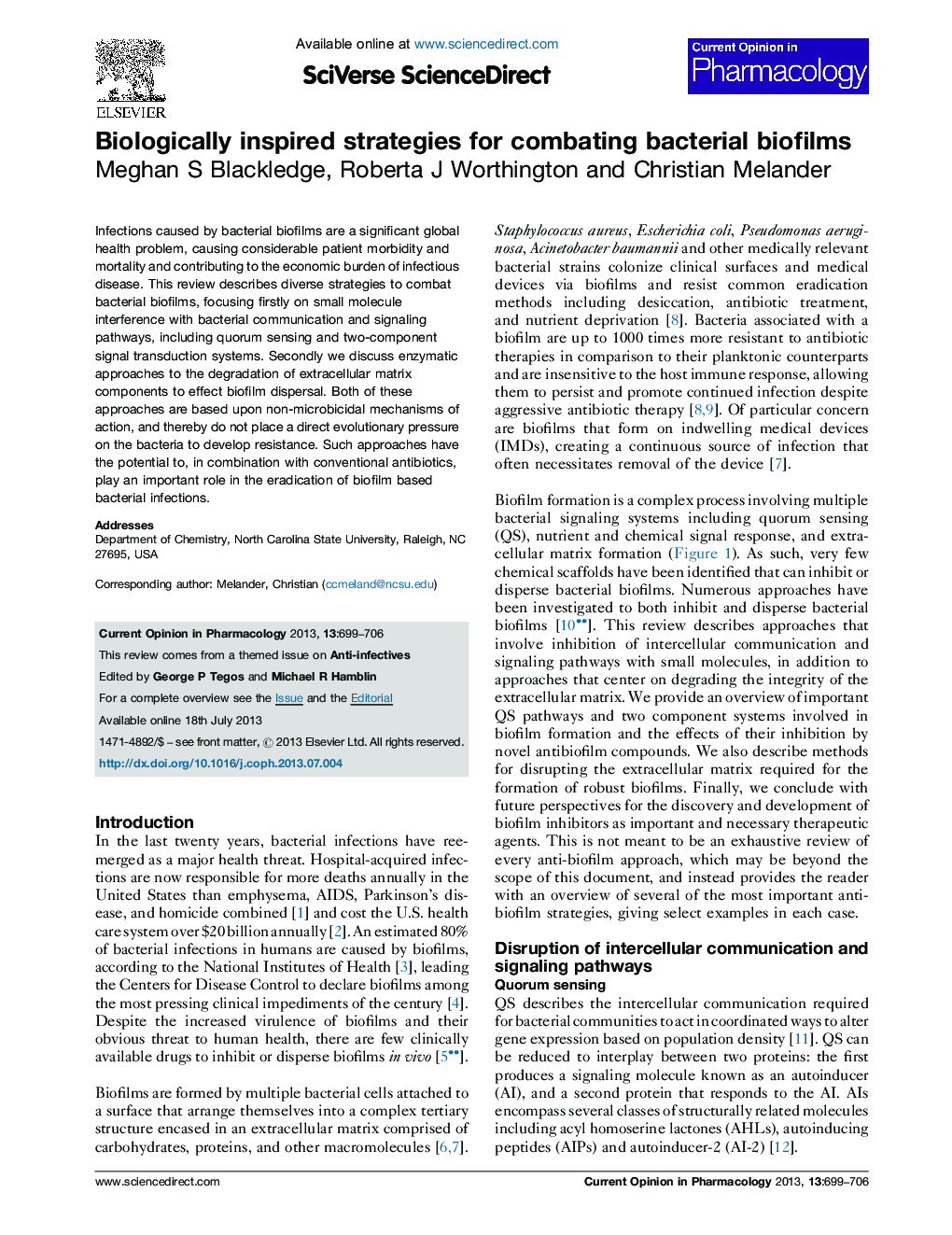| کد مقاله | کد نشریه | سال انتشار | مقاله انگلیسی | نسخه تمام متن |
|---|---|---|---|---|
| 2529929 | 1120419 | 2013 | 8 صفحه PDF | دانلود رایگان |

• Biofilms are inherently resistant to antibiotics and are a major health threat.
• Quorum sensing antagonists inhibit biofilm formation.
• Inhibition of two-component systems disrupts biofilm formation.
• Approaches to target the extracellular matrix to disrupt biofilms are discussed.
Infections caused by bacterial biofilms are a significant global health problem, causing considerable patient morbidity and mortality and contributing to the economic burden of infectious disease. This review describes diverse strategies to combat bacterial biofilms, focusing firstly on small molecule interference with bacterial communication and signaling pathways, including quorum sensing and two-component signal transduction systems. Secondly we discuss enzymatic approaches to the degradation of extracellular matrix components to effect biofilm dispersal. Both of these approaches are based upon non-microbicidal mechanisms of action, and thereby do not place a direct evolutionary pressure on the bacteria to develop resistance. Such approaches have the potential to, in combination with conventional antibiotics, play an important role in the eradication of biofilm based bacterial infections.
Journal: Current Opinion in Pharmacology - Volume 13, Issue 5, October 2013, Pages 699–706